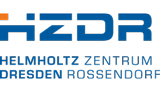Department of Molecular Structures
Research
The Department of Molecular Structures conducts synchrotron-based research, offering a robust toolkit for scientists investigating materials containing actinides and lanthanides.
Experiments take place at the Rossendorf Beamline of The European Synchrotron (ESRF), in Grenoble (France) which is specifically dedicated to the actinide science and research on radioactive waste disposal. The beamline consists of four experimental stations -XAFS, XES, XRD-1, XRD-2:
- XAFS station with fluorescence and transmission detection for X-ray Absorption Fine-Structure (XAFS) spectroscopy, including (conventional) X-ray Absorption Near-Edge Structure (XANES) and Extended X-ray absorption fine-structure (EXAFS) spectroscopies
- XES with a 5-crystal Johann-type spectrometer for high-energy-resolution fluorescence-detection X-ray absorption near-edge spectroscopy (HERFD-XANES), X-ray emission spectroscopy (XES) and resonant inelastic X-ray scattering (RIXS) measurements.
- XRD-1 station with a heavy-duty, Eulerian cradle, 6-circle goniometer for (high-resolution) powder X-ray diffraction (PXRD), surface-sensitive crystal truncation rod (CTR) and resonant anomalous X-ray reflectivity (RAXR) measurements
- XRD-2 station with a Pilatus3 x2M detector stage for single crystal X-ray diffraction (SCXRD) and in situ/in-operando PXRD measurements.
Our research provides detailed insights into the structural and electronic properties of actinide and lanthanide-containing materials across various scientific disciplines, including physics, chemistry, environmental science, and geoscience. We study fundamental electron interactions, bonding properties, probing the local structures and oxidation states of complex systems. Data analysis is performed with the help of electronic structure calculations.
EXAFS, HERFD-XANES, XES and RIXS is not restricted to crystalline solids, but can be applied to a wide range of samples, to derive information on e.g. aqueous speciation, complexation with dissolved inorganic ligands like chloride, sulfate or nitrate, complexation with organic ligands like acetate or humic acid, interaction with bacteria and plants, sorption to mineral and rock surfaces for actinides an other metals and metalloids. Due to the high penetration depth of the employed hard X-rays, the methods are suited to study chemical reactions in-situ/in-operando, for instance at very low or high temperatures, under special atmospheres, or under electrochemical potentials.
Publications
More about Rossendorf Beamline
Team
Most team members are permanently at the ESRF in Grenoble (France).
"Moleculare Structure" department (Research site: Grenoble)
Source: Prof. Dr. Kvashnina, Kristina
Head | |||||
| Name | Bld./Office | +49 351 260 | |||
|---|---|---|---|---|---|
| Prof. Dr. Kristina Kvashnina | ROBL/21.6.04 | +33 476 88 2367 | |||
Employees | |||||
| Name | Bld./Office | +49 351 260 | |||
| Dr. Lucia Amidani | ROBL/14.1.04 | +33 476 88 1982 | |||
| Dr. Nils Baumann | ROBL/21.6.03 | +33 476 88 2849 | |||
| Dr. Elena Bazarkina | ROBL/14.1.01 | +33 476 88 4578 | |||
| Clara Lisa E Silva | ROBL/14.1.04 | +33 476 88 2044 | |||
| Jörg Exner | ROBL/BM20 | +33 476 88 2372 | |||
| Dr. Christoph Hennig | ROBL/21.6.02a | +33 476 88 2005 | |||
| Dr. Eleanor Sophia Lawrence Bright | +33 476 88 2462 | ||||
| Dr. Damien Prieur | ROBL/21.6.03 | +33 476 88 2463 | |||
| Dr. André Roßberg | 801/P316 | 2758 | |||

